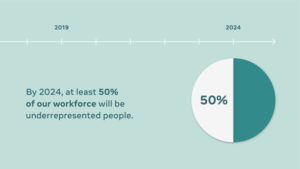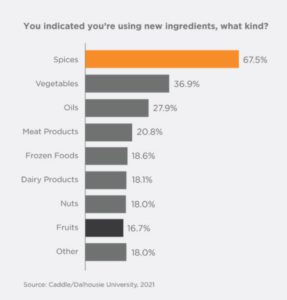North News: March 19
North News: March 19 http://130.211.120.75/wp-content/uploads/FB.jpg 890 501 Jonathan Forani http://0.gravatar.com/avatar/0224c5ae9357da0ca0dcbe96be87c430?s=96&d=mm&r=gFacebook’s New Report about Diversity and Inclusion in Advertising
 Facebook recently published a new report which found that limiting and negative representations are still present in online advertising today, with some campaigns portraying people in stereotypical ways. The report surveyed 1,200 people and included a review of more than 1,200 brand lift studies and an analysis conducted of more than 1,000 Facebook video ads. The results show that representation is still a major issue – and by not catering to, or considering these elements, advertisers could be failing to reach broader audiences.
Facebook recently published a new report which found that limiting and negative representations are still present in online advertising today, with some campaigns portraying people in stereotypical ways. The report surveyed 1,200 people and included a review of more than 1,200 brand lift studies and an analysis conducted of more than 1,000 Facebook video ads. The results show that representation is still a major issue – and by not catering to, or considering these elements, advertisers could be failing to reach broader audiences.
Some quick stats from the report:
- People with disabilities were severely underrepresented in online ads (present in only 1.1% of the ads examined) as were members of the LGBTQ+ community (0.3%).
- Some 59% of consumers polled said they are more loyal to brands that stand for diversity and inclusion in online advertising, and 59% also said they prefer to buy from brands that stand for diversity and inclusion in online advertising.
It’s important to keep these considerations in mind when we’re drafting messaging and working on creative. Not keeping these learnings in mind means we are not catering to our full audience, and that can have negative impacts, both in terms of inclusion more broadly and in boosting your promotional efforts.
Facebook is testing to ability to share Instagram Reels directly to Facebook Feeds

Currently the test is being run in India but could soon be available more widely. In addition to sharing directly to Facebook, users who create the 30-second long reels on Instagram will have the option of having them recommended on Facebook. Facebook is clearly taking steps to ramp up its video sharing capabilities to compete with TikTok. Going forward, Reel content will likely become a bigger focus on both Facebook and Instagram and should be considered when we are building out content plans for our clients.
Has the pandemic changed our relationship with food…foreverrrrrr?
 Nourish Food Marketing has released a whitepaper outlining how over the last year relationships with food have been impacted by COVID19. A few interesting points out of the report:
Nourish Food Marketing has released a whitepaper outlining how over the last year relationships with food have been impacted by COVID19. A few interesting points out of the report:
- Old trends have seen an acceleration/resurgence:
- Canadians are spending much more on food, and “treating ourselves to more splurge experiences” at the grocery store (e.g., using our restaurant budgets for a good store-bought prime rib)
- 77% of Canadians agree or strongly agree with the statement, ‘Food and eating are important ways I stay entertained during the pandemic.’ – a new phrased coined “Eatertainment”
- Family meal time has seen a resurgence, with 85% of Canadians indicating that they will continue to try to eat together after the pandemic
- Product origin when it comes to food has become increasingly more important for Canadians
- 50% are more likely to think about how their food is grown since the start of the pandemic
- There has been a rediscovery of other traditional products as well, like frozen foods/meals (think Sobeys’ O&B partnership)
- Home cooking is losing its luster as people get bored or tired of answering the age-old question “What’s for dinner?”
- Canadians have tried fewer new meals/recipes/flavours than you’d expect (“only 36% of Canadians had learned a new recipe (defined as consisting of at least three ingredients) since the start of the pandemic”, indicating that perhaps recipe and food content is simply “eatertainment” eye candy, rather than actual inspo
- BUT 67.5% of Canadians indicate that they’re using spices as a new ingredient in cooking
- Canadians are spending much more on food, and “treating ourselves to more splurge experiences” at the grocery store (e.g., using our restaurant budgets for a good store-bought prime rib)
- New trends have also emerged:
- All the stress and anxiety of 2020 has created a new market for food and beverages that claim to promote a calm headspace, relaxation and sleep, or provide resilience
- Online grocery shopping became far more prevalent over the last year BUT only 59% of Canadians claim they will continue to shop online for groceries, proving the importance of the in-store experience
